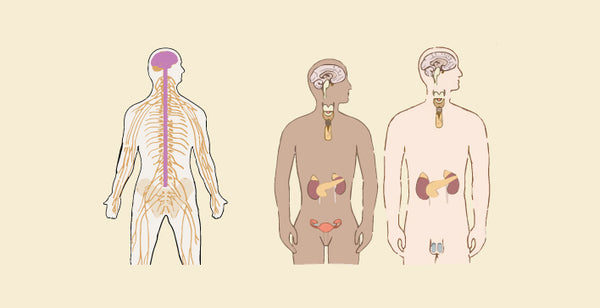Mesothelium vs Epithelium: Epithelium, a broad word for tissues that cover our bodies' surfaces, can take numerous shapes, including the skin that protects us from the outside world and the lining of our interior organs. Mesothelium, a form of epithelium, is responsible for lining our interior cavities, including the chest and abdomen. While Epithelium and Mesothelium have some structural and functional similarities, their origins are fundamentally different. Epithelium is formed from all three embryonic germ layers (ectoderm, mesoderm, and endoderm), resulting in the many epithelial tissues present throughout the body. Mesothelium, on the other hand, develops exclusively from the mesoderm germ layer. Furthermore, epithelia can be seen lining different surfaces exposed to the external environment (skin) or internal channels (gastrointestinal tract), whereas mesothelium is strictly confined to lining internal body cavities.
Differences Between Mesothelium and Epithelium
Mesothelium and epithelium are both types of tissue found in the body, but they have distinct characteristics and functions. Here are their definitions followed by the difference Between the two:
|
Feature |
Mesothelium |
Epithelium |
|
Location |
Lines serous cavities (peritoneal, pleural, pericardial) |
Covers surfaces of organs, lines cavities, and forms glands |
|
Cell Shape |
Flattened to cuboidal |
Can be flattened, cuboidal, or columnar |
|
Layers |
Single layer |
Can be single-layered (simple) or multi-layered (stratified) |
|
Function |
Lubrication, absorption, secretion |
Protection, absorption, secretion, sensation |
|
Origin |
Arises from mesoderm |
Arises from ectoderm, endoderm, or mesoderm |
|
Structure |
Cells have microvilli and microfilaments |
Cells have specialized structures like microvilli, cilia, tight junctions |
|
Basement Membrane |
Absent |
Present |
|
Vascularity |
Avascular |
Avascular, but innervated |
|
Innervation |
Not usually innervated |
Innervated |
|
Specializations |
Lack a basement membrane, presence of microvilli and microfilaments |
Rests on a basement membrane, may contain goblet cells, specialized structures like cilia |
Order the Best Jogger Scrub from Here!
What is Mesothelium?
Mesothelium is a form of epithelium that lines the body's main cavities, including the peritoneum (abdominal cavity), pleura (lung cavity), and pericardium. It consists of a single layer of flattened cells that release a lubricating fluid to minimise friction between organs. Mesothelium also affects immune function and wound healing.
Browse Best Scrubs Collection
Key Features of Mesothelium:
- Mesothelium produces two types of membranes: serous membranes, which line cavities such as the peritoneum and pleura, and mucous membranes, which line organs such as the intestines and airways.
- Mesothelial cells release lubricating fluids, which minimise friction between organs and preserve the underlying tissues. In serous membranes, this fluid is called serous fluid, whereas mucous membranes create mucus for lubrication and protection.
- Mesothelium, like epithelium, can operate as a barrier against infections and control the flow of chemicals between organs and cavities. For example, the peritoneal mesothelium assists to avoid fluid accumulation and organ adhesion.
- Mesothelium originates from the same embryonic tissues as epithelium. It helps in embryonic development and, in some cases, tissue repair and regeneration.
What is Epithelium?
The epithelium is a sort of tissue that covers your body's outer surface and lines its organs and cavities. It forms a barrier to protect the underlying tissues, secretes mucus and enzymes, and enables for absorption and excretion. Epithelium is further characterised depending on the number of cell layers (simple or stratified) and cell shape (squamous, cuboidal, or columnar).
Explore All Women's Scrub
Key Features of Epithelium:
- Epithelium is distinguished by densely packed layers of cells that form a continuous sheet-like structure. This structure creates a barrier to protect underlying tissues, regulates what enters and exits the body, and facilitates processes such as absorption and secretion.
- Epithelial tissue lacks its own blood arteries and must rely on diffusion from underlying connective tissues for sustenance. However, it demonstrates a high level of specialisation for a variety of jobs. For example, the epithelium lining the intestine is designed for absorption, whereas the one in the skin serves as a waterproof barrier.
- Epithelial cells are continually renewing, allowing the body to mend wounds and replace worn-out cells quickly. This is critical for the integrity of the barriers and linings that epithelial tissue creates.
- Epithelial tissue lies atop a specialised layer known as the basement membrane. This thin, non-cellular layer provides structural support, separates the epithelium from underlying tissues, and plays a role in cell signaling and communication.
Shop Best Lab Coats from Here!
Similarities Between Mesothelium and Epithelium
- Mesothelium and epithelium. Both are epithelial tissues.
- They form a barrier against infections and mechanical injury.
- Both are involved in the absorption and secretion process.
- Mesothelium and epithelium originate from embryonic germ layers.
- They are made up of densely packed cells.
Even while epithelium and mesothelium are both epithelial tissues, they differ significantly. Epithelium lines organs and surfaces throughout the body, with some facing the outside (skin) and others lining interior cavities (digestive tract). Mesothelium, on the other hand, borders our major bodily cavities, including the pleura (lungs), peritoneum (abdomen), and pericardium (heart), and produces a lubricating fluid to decrease friction during organ movement. In essence, epithelium refers to the overall covering of tissues, whereas mesothelium is a form of epithelium that lines particular interior areas.
| Check out More Articles | |
| Difference Between Cartilage And Bone | |
| Difference Between Endocrine And Exocrine Glands | |
| Difference Between Cell Wall And Cell Membrane | |















